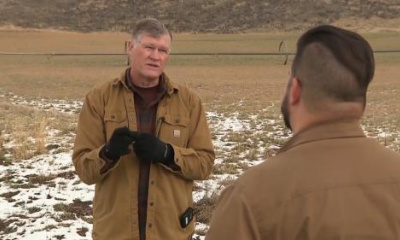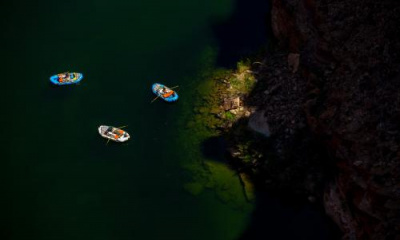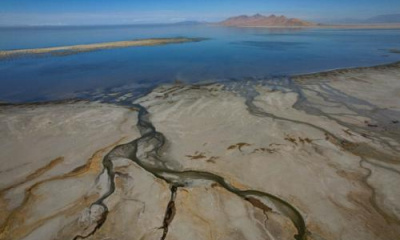As part of its mission to elevate reporting on potential solutions for the Great Salt Lake, the Great Salt Lake Collaborative paid for Utah Public Radio and FOX 13 News to partner in reporting on fallowing from Green River, Utah. More articles like this can be found at greatsaltlakenews.org.
GREEN RIVER, Utah — Most travelers, including Utahns, know the town of Green River as a convenient stop on Interstate 70. With stands advertising the region's famous Green River melons, many wonder if they could really grow in such a dry part of the world.
The Thayn family has been farming in Wellington and Green River for at least five generations, and they understand western water issues. Talking to FOX 13 News next to land that would normally look like neighboring fields.
"We've gone from open ditches to gated pipe and now to this. And this is, by far the the best and most efficient way to put the water down," explained Nathan Thayn.
Even with modern techniques, Utah State University says agriculture uses 79 percent of the state's water.
"Trying to wrap your head around Utah water is a little bit challenging," said Jordan Nielson, the Utah State Director for Trout Unlimited.
Nielson is one of the architects and proponents of what's called the System Conservation Pilot Program (SCPP).
"So we have to find ways to recover our lakes and reservoirs, using what we have, which means doing smart agriculture, using water as a part of the rotation of crops, and allowing people that have rights to use water to become a part of the solution. And let them be the heroes," he said.
SCPP is a four-state program involving Utah, Colorado, New Mexico and Wyoming. It's administered by the Upper Colorado River Commission which brings the states together to work on river issues as a unit,
"In the lower Colorado River Basin, we're looking at like six different major water users," said Nielson. "And in the Upper Basin, it's something like 4,000. So to coordinate that, even at the agency level, it's really, really challenging."
The Thayns understand.
"At some point, we're gonna have to recognize the we may have to change some practices," said Thayn.
"They want to be part of the solution and recognize that they are a major water user. And so this is a way to bring the state and the farmers to the table, and test or pilot things that might work for water conservation, that keeps farmers in production, but can also generate some wet water for the system as a whole," explained Lily Bosworth with the Colorado River Authority of Utah.
The term wet water sounds silly, but it's a way to distinguish reality from legality. Look at water rights on paper and the American Southwest has enough to go around. However, actual water flowing into streams doesn't match it.
The Thayns have both legal rights to water that has perennially flowed by their farm. When they fallow a field, more actual water, wet water, continues downstream.
"There's no supplement for water, no matter what you do," said Lee Thayn. "Water is the number one issue."
The first year of this program was a $16 million dollar pilot spread around four states and dozens of projects. There was enough interest and evidence it was working to continue the program in the coming year. If it is effective, it could be a model for what Utahns could do on the Wasatch Front to find water for the Great Salt Lake.








